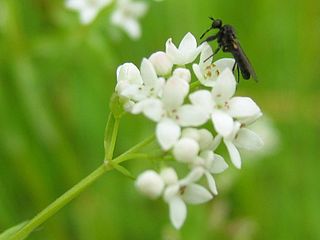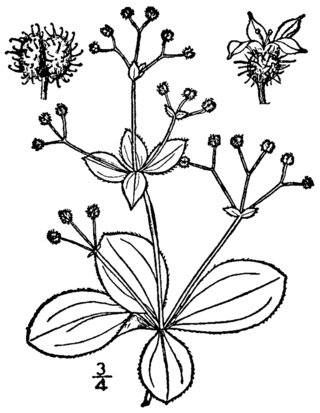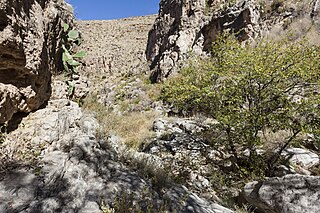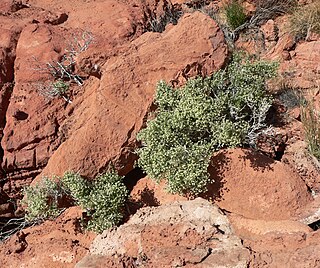
Rubiaceae is a family of flowering plants, commonly known as the coffee, madder, or bedstraw family. It consists of terrestrial trees, shrubs, lianas, or herbs that are recognizable by simple, opposite leaves with interpetiolar stipules and sympetalous actinomorphic flowers. The family contains about 14,100 species in about 580 genera, which makes it the fourth-largest angiosperm family. Rubiaceae has a cosmopolitan distribution; however, the largest species diversity is concentrated in the tropics and subtropics. Economically important genera include Coffea, the source of coffee; Cinchona, the source of the antimalarial alkaloid quinine; ornamental cultivars ; and historically some dye plants.

Galium verum is a herbaceous perennial plant of the family Rubiaceae. It is widespread across most of Europe, North Africa, and temperate Asia from Israel, Lebanon and Turkey to Japan and Kamchatka. It is naturalized in Tasmania, New Zealand, Canada, and the northern half of the United States. It is considered a noxious weed in some places.

Galium triflorum is a herbaceous plant of the family Rubiaceae. It is widespread in northern Europe, eastern Asia, the Middle East and Indian subcontinent, and North America. The plant is considered a noxious weed in New York, Pennsylvania, Vermont, New Hampshire, Connecticut and Massachusetts.

Galium mollugo, common name hedge bedstraw or false baby's breath, is a herbaceous perennial plant of the family Rubiaceae. It shares the name hedge bedstraw with the related European species, Galium album.

Galium palustre, the common marsh bedstraw or simply marsh-bedstraw, is a herbaceous annual plant of the family Rubiaceae. This plant is widely distributed, native to virtually every country in Europe, plus Morocco, the Azores, Turkey, Turkmenistan, Western Siberia, Greenland, eastern Canada, St. Pierre & Miquelon, and parts of the United States. The species is classified as a noxious weed in New York, Pennsylvania, Massachusetts, Connecticut, Vermont and New Hampshire. It is considered naturalized in Kamchatka, Australia, New Zealand and Argentina.

Galium boreale or northern bedstraw is a perennial plant species of the Rubiaceae family. It is widespread over the temperate and subarctic regions of Europe, Asia and North America including most of Canada and the northern United States.

Galium saxatile or heath bedstraw is a plant species of the genus Galium. It is related to cleavers.

Galium spurium, the stickwilly or false cleavers, is a plant species of the Rubiaceae. It is widespread across Europe, Asia, Africa and Canada, and is naturalized in Australia. It is considered a noxious weed in many places.
Galium sterneri or limestone bedstraw is a plant species of the Rubiaceae. It is native to northern Europe.

Galium sylvaticum, commonly known as Scotch mist or wood bedstraw, is a plant species of the genus Rubiaceae. Its genus name, Galium, is derived from the Greek word for "milk," apparently because some species have been used to curdle milk.

Galium aparine, with common names including cleavers, clivers, catchweed, robin-run-the-hedge, goosegrass,and sticky willy, is an annual, herbaceous plant of the family Rubiaceae.

Galium concinnum, known as the shining bedstraw, is a herbaceous perennial plant species in the Rubiaceae family. It is native to the Midwestern United States and central Canada, especially the Great Lakes Region and the Valleys of the Ohio, lower Missouri, and upper Mississippi Rivers. It is commonly found in deciduous forests and forest edges. It grows low to the ground in natural habitats. Although it is not an invasive species, it can be very weedy. It is typically not cultivated.
Galium jepsonii, with the common name Jepson's bedstraw, is a rare flowering plant species in the Rubiaceae — Madder family.

Galium kamtschaticum, known as Kamchatka bedstraw or boreal bedstraw, is a plant species in the Rubiaceae, named for the Kamchatka Peninsula on the Pacific Coast of Russia. The species is native to northeastern Asia and northern North America: Russia, northeastern China, Korea, Japan, Alaska, Canada, and the northern part of the contiguous United States.

Galium obtusum, the bluntleaf bedstraw, is a herbaceous plant species in the family Rubiaceae. Bluntleaf bedstraw is a wildflower native to eastern North America.
Galium orizabense is a species of plants in the family Rubiaceae, named for the town of Orizaba in Veracruz, where the first collections of the species were made. The species is native to Mexico, Costa Rica, Guatemala, Panamá, Venezuela, Colombia, and Hispaniola, plus widely scattered locations in the southeastern United States.

Galium proliferum, also known as limestone bedstraw, is a species of plant in the Rubiaceae family. It is native to Northeastern Mexico and the Southeastern United States. More specifically, it can be found in American states California, southern Nevada, southern Utah, Arizona, New Mexico, Texas, as well as the Mexican states Coahuila and Nuevo León.

Galium stellatum, the starry bedstraw or desert bedstraw, is a species of plant in the family Rubiaceae. It is widespread across most of Arizona, and found also in Baja California, Baja California Sur, southeastern California, Nevada, Utah. It is dioecious, with male and female flowers on separate plants.

Galium tinctorium, the stiff marsh bedstraw, is a species of plants in the Rubiaceae. It is widespread and common across the eastern part of North America, from Texas to Labrador and from Minnesota to Florida, plus eastern and central Mexico and the Dominican Republic. It is classed as a noxious weed in some parts of the northeastern United States.
















